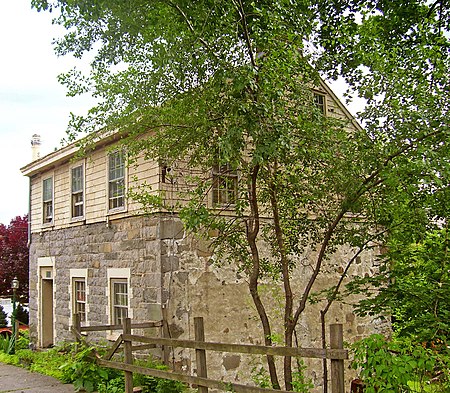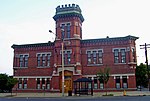Belknap Stone House
American Revolutionary War sitesBuildings and structures in Newburgh, New YorkFederal architecture in New York (state)Houses in Orange County, New YorkHouses on the National Register of Historic Places in New York (state) ... and 1 more
National Register of Historic Places in Orange County, New York

The Belknap Stone House in Newburgh, New York, was built by Abel Belknap in the 1750s. Abel Belknap chaired the local Committee of Safety during the war, and when the Continental Army was encamped in the Newburgh area in 1782–83, the house served as James Clinton's headquarters in the area. Today it has been restored and operates as Stone Cottage Veterinary Clinic. It was added to the National Register of Historic Places in 2001.
Excerpt from the Wikipedia article Belknap Stone House (License: CC BY-SA 3.0, Authors, Images).Belknap Stone House
Locust Street,
Geographical coordinates (GPS) Address Nearby Places Show on map
Geographical coordinates (GPS)
| Latitude | Longitude |
|---|---|
| N 41.501666666667 ° | E -74.040833333333 ° |
Address
Locust Street 1
12550
New York, United States
Open on Google Maps







